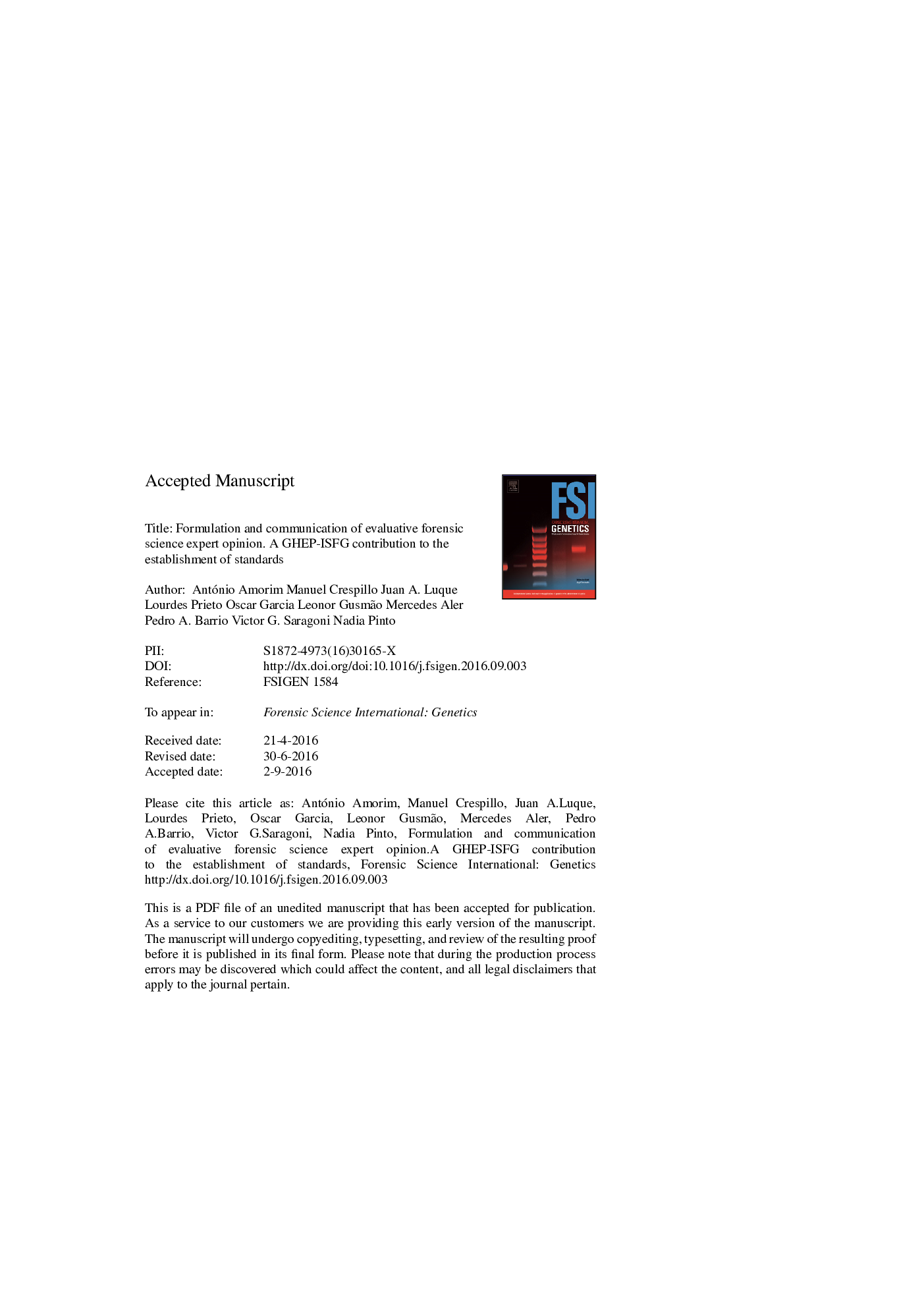| Article ID | Journal | Published Year | Pages | File Type |
|---|---|---|---|---|
| 6553482 | Forensic Science International: Genetics | 2016 | 21 Pages |
Abstract
Communicating and interpreting genetic evidence in the administration of justice is currently a matter of great concern, due to the theoretical and technical complexity of the evaluative reporting and large difference in expertise between forensic experts and law professionals. A large number of initiatives have been taken trying to bridge this gap, contributing to the education of both parties. Results however have not been very encouraging, as most of these initiatives try to cope globally with the problem, addressing simultaneously theoretical and technical approaches which are in a quite heterogeneous state of development and validation. In consequence, the extension and complexity of the resulting documents disheartens their study by professionals (both jurists and geneticists) and makes a consensus very hard to reach even among the genetic experts' community. Here we propose a 'back-to-basics', example-driven approach, in which a model report for the two most common situations faced by forensic laboratories is presented. We do hope that this strategy will provide a solid basis for a stepwise generalisation.
Related Topics
Life Sciences
Biochemistry, Genetics and Molecular Biology
Genetics
Authors
António Amorim, Manuel Crespillo, Juan A. Luque, Lourdes Prieto, Oscar Garcia, Leonor Gusmão, Mercedes Aler, Pedro A. Barrio, Victor G. Saragoni, Nadia Pinto,
